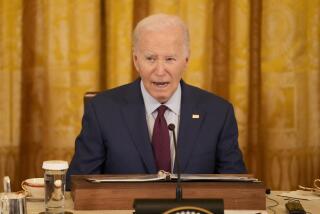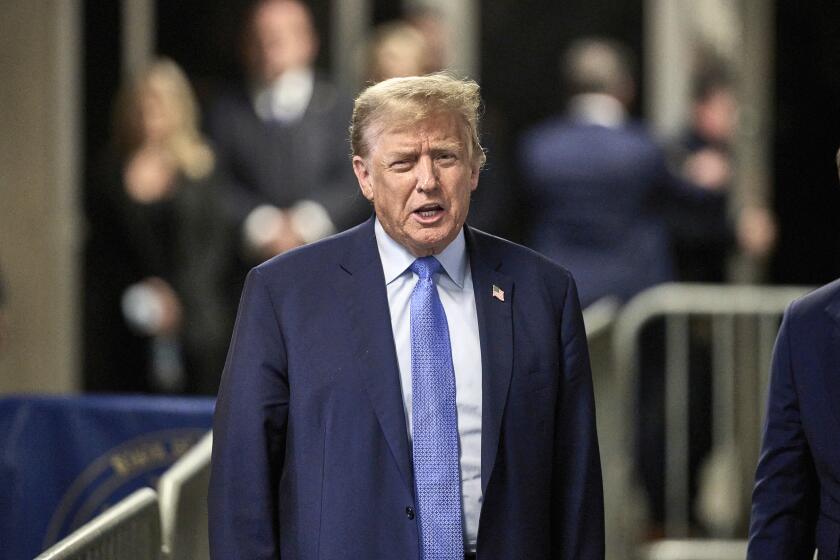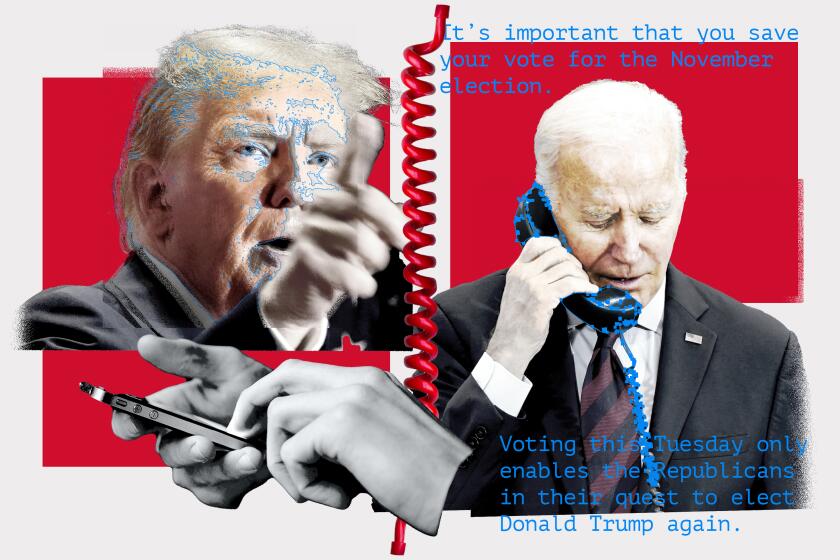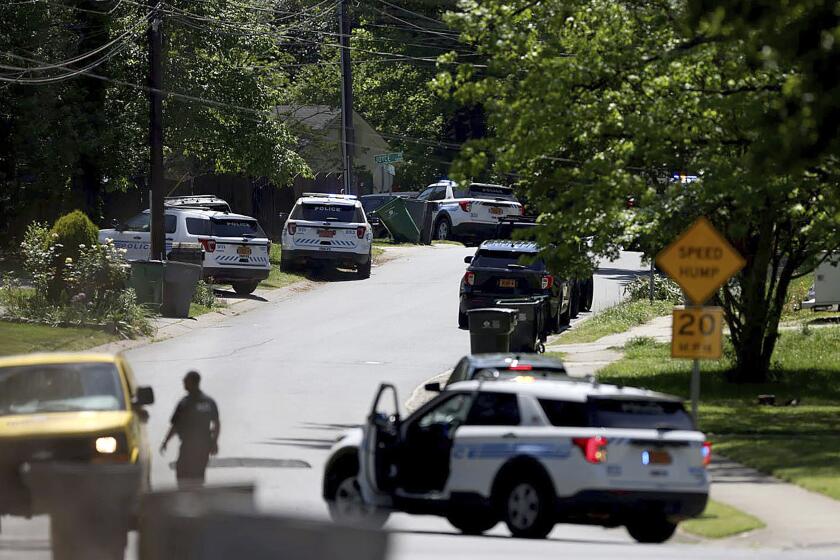Congress Has Cold-War Era Hidden Bunker
In one of the best-kept secrets of the Cold War, the federal government built a $14-million underground bunker in West Virginia and maintained it for more than three decades for Congress to use in the event of a nuclear attack, officials acknowledged Friday.
The hideaway Capitol was built under the fashionable Greenbrier resort in White Sulphur Springs, W. Va., about 250 miles from Washington, and its location was known only to a relative handful of the nation’s highest-ranking officials.
“From 1958 on, the very existence of this facility was a closely guarded secret,” Democratic and Republican congressional leaders said in an extraordinary joint statement. “Very few in Congress or the executive branch knew of the program.”
Friday’s disclosure recalled a time when many Americans were building back-yard fallout shelters in case of a nuclear attack on the United States by the Soviet Union.
Since the Greenbrier facility could not withstand a direct nuclear blast, however, the disclosure probably has ended its usefulness as a wartime meeting place for the House and Senate, congressional leaders said.
A similar underground bunker supposedly able to withstand a nuclear attack exists in the nearby Virginia mountains for use by the President in case of war. Its exact location has not been disclosed. A smaller, alternative White House bunker also reportedly has been built closer to the presidential retreat at Camp David, Md.
The unusual joint statement confirming the existence of the Greenbrier bunker came after the first public reports of it appeared Friday in the Washington Times. Another story on the bunker appears in today’s editions of the Washington Post.
Both newspapers said they proceeded with publication of the articles despite pleas from House Speaker Thomas S. Foley (D-Wash.) to refrain from doing so.
Editors at the newspapers said Foley made his appeal on two counts: that the existence of the costly and secret bunker might reflect poorly on the scandal-plagued House and that national security might be jeopardized.
The Washington Times said it also believed that Foley feared further criticism from fellow members of Congress, most of whom were unaware of the bunker.
Post Executive Editor Leonard Downie Jr. said that after considering the request, the newspaper concluded that “this was a historically significant and interesting story, and its publication would not pose a great danger to national security or human life.”
He said the usefulness of the bunker already was much in doubt, citing, among other things, changes in the world and in underlying assumptions of a 1950s-style attack scenario. Among those assumptions was the likelihood of a relatively long warning period before a nuclear strike--enough time to get government leaders to the site.
In their joint statement condemning the articles and confirming the bunker, congressional leaders said: “The key vulnerability of the program was that it relied upon a fixed facility which was not capable of withstanding a direct nuclear blast. It was always clear that if the secret of the facility’s location were to be compromised, the effectiveness and security of the program would be jeopardized.
“The joint bipartisan leadership of Congress sought in several meetings with Washington Post editors to persuade the Post not to reveal the location of the facility,” they said. “We regret their decision to do so.”
The proposal for the secret center was made by then-President Dwight D. Eisenhower at a time when Cold War tensions between the Soviet Union and the United States were near their peak.
The Defense Department selected the Greenbrier site and arranged for construction of the costly underground facility at the remote Allegehany mountain location not far from Roanoke, Va.
The Greenbrier, a luxury hotel with 6,500 acres of grounds, has three golf courses, tennis courts and a well-known spa and mineral bath--an unlikely locale for a haven from nuclear destruction. Hotel room rates range up to $500 a night.
The Greenbrier bunker has living quarters and work space for 800 people as well as separate meeting halls for the House and Senate. It was designed so members of Congress could get there quickly and carry on their legislative duties if Washington were threatened with nuclear extinction.
It has a communications center to stay in touch with U.S. military commands around the world so the House Speaker, if he ever succeeded to the presidency because of the wartime deaths of the President and vice president, would be able to unleash U.S. nuclear missiles from the bunker if necessary.
One explanation of how the secret was divulged came from a well-placed congressional source who said: “Now that the Soviet Union has collapsed and there no longer is so great a fear of nuclear attack, tongues may be loosening.”
There was no estimate of how much it costs to maintain the bunker, but the Washington Times said the government paid $50,000 to $60,000 a year in rent to the hotel’s owners, the CSX Corp.
The joint statement was signed by Foley, House Majority Leader Richard A. Gephardt (D-Mo.) and his Republican counterpart, Rep. Robert H. Michel (R-Ill.), as well as Senate Majority Leader George J. Mitchell (D-Me.) and Senate Minority Leader Bob Dole (R-Kan.).
For many years in the 1980s, House Democrats held a winter retreat at the Greenbrier hotel to meet informally and discuss legislative issues. That tradition ended in 1989, however, after the Democrats were criticized for meeting in such a lavish setting at a time when Congress was considering a 51% pay raise.
Doomsday Destinations
Among the safe havens for U.S. leaders in the event of an attack:
(A) The Greenbrier relocation center: The long-secret war bunker, designed to accommodate Congress, is under the Greenbrier Hotel in the Allegehany mountains west of Roanoke, Va.
(B) Mt. Weather: Buried deep within the Blue Ridge Mountains of Virginia, Mt. Weather is intended to take in the President, the justices of the Supreme Court, Cabinet secretaries and other high-ranking officials.
(C) Site R: This location was to be both a communications center and an alternate command post in the event that Washington and the Pentagon were incinerated in a nuclear attack. As of February, it has no longer been manned 24 hours a day.
(D) North American Aerospace Defense Command: The center, tucked inside Cheyenne Mountain in Colorado Springs, Colo., continues to scan the heavens for incoming threats and stands ready to help coordinate the response to any attack.
Source: Times wire services
More to Read
Start your day right
Sign up for Essential California for news, features and recommendations from the L.A. Times and beyond in your inbox six days a week.
You may occasionally receive promotional content from the Los Angeles Times.






